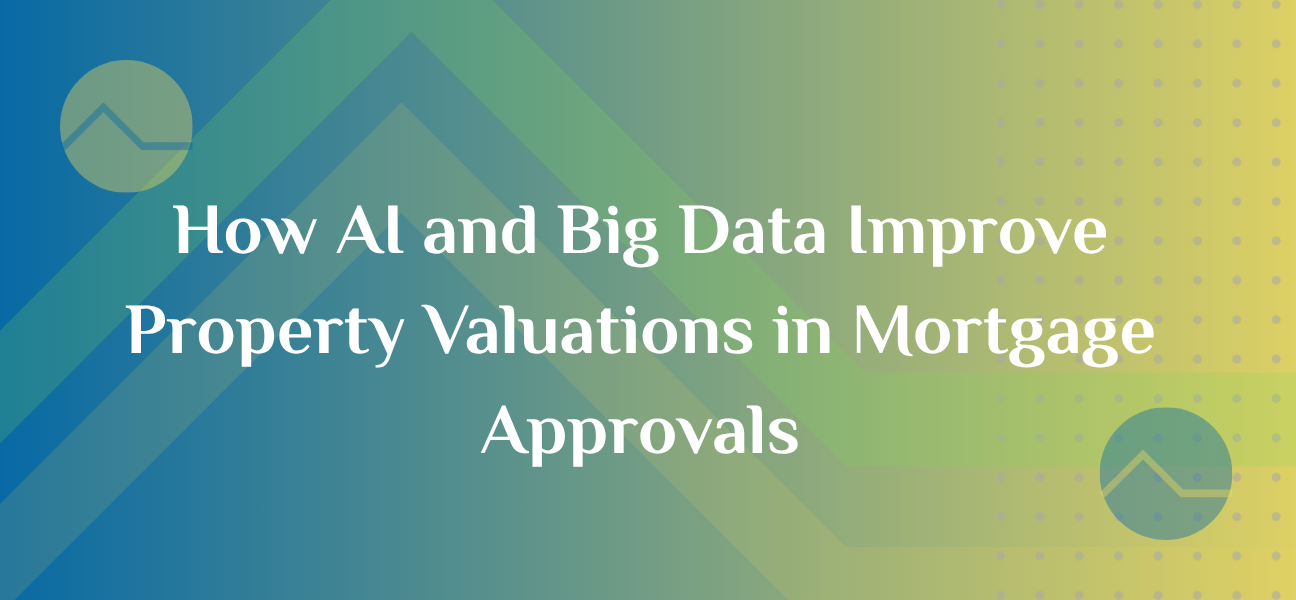

One of the most critical steps in granting a mortgage is determining the true market value of the property being financed.
Traditionally, this relies on manual appraisals, local comparables, and human judgment.
But these methods are time-consuming, subjective, and prone to bias or error.
Enter AI (artificial intelligence) and big data — combining large volumes of data, advanced analytics, and machine learning to supercharge property valuation models.
For lenders, this means faster decisions, lower risk, and more consistent accuracy.
For borrowers, it can mean fairer valuations, fewer surprises, and smoother closing.
In this blog, we’ll explore:
In the traditional model, an appraiser inspects the property, adjusts for local comparables (recent sales of similar properties), condition, location, and more.
But this approach has limitations: subjectivity, delays, limited scalability, and difficulty accounting for hidden or future factors.
AI and big data augment or replace parts of that process.
Using automated valuation models (AVMs) enhanced with machine learning, AI systems analyze massive datasets—sales records, historical trends, location and neighborhood data, property features, macroeconomic indicators, and sometimes imagery or remote sensing—to predict property values.
These models can detect patterns and correlations humans may miss.
As RiskWire outlines, AI elevates AVMs by adding predictive capacity (not just static comparisons) and integrating multiple data streams for more objective valuation.
A research paper on AI in property assessment notes that AI systems can process huge volumes of data and “produce estimates of most probable sale price” without requiring a pre-specified formula, going beyond traditional statistical regression.
In real estate and proptech, AI is also being applied to remote inspection, image analysis, and predictive trend modeling to refine valuations.
Here are some of the ways AI and big data are leveraged in modern property valuation:
AI models learn from a training set of past transactions and property features, identifying hidden relationships between variables.
Over time, models refine accuracy and adjust weighting dynamically.
AVMs are computation engines that evaluate properties automatically based on structured data.
When enriched with AI, they can adjust for nonlinearity, outliers, and context (e.g. upcoming infrastructure, local development).
Data about proximity to amenities, transit, schools, crime rates, land use, and future development plans can significantly influence valuation.
AI can ingest these layers to adjust property value predictions.
AI systems can analyze property photos, building condition, roof quality, materials, landscaping and more.
These visual signals help refine valuations beyond mere metadata.
Beyond static valuation, AI models can predict future price movements or risk of depreciation by considering market trends, interest rates, supply shifts, and macroeconomic indicators.
Big data platforms clean, validate, and cross-verify data points from multiple sources (tax records, MLS, public registries).
AI flags anomalies or missing data, improving robustness.
AI can generate valuations in minutes rather than days or weeks. That accelerates mortgage underwriting and shortens closing timelines.
By removing human bias and increasing data depth, AI valuations tend to be more consistent across similar properties and less prone to outlier errors.
AI models can flag overvaluation or undervaluation, detect anomalies (e.g. recent drastic improvements not reflected in comps), and reduce the risk of collateral loss.
For lenders handling large volumes of mortgage applications, AI enables valuations at scale without a proportional increase in human appraiser resources.
With richer valuation inputs and predictive modeling, lenders can make more confident loan decisions, set more optimal loan-to-value (LTV) ratios, or require less conservative buffers.
While promising, AI valuation isn’t perfect. Key challenges include:
At Prestian.ai, property valuation is a central pillar in our mortgage underwriting. Here’s how we integrate AI and data intelligence:
These use cases illustrate how AI is not theoretical—it’s being deployed now to make mortgage valuation smarter and faster.
Some emerging directions to watch:
In mortgage underwriting, accurate property valuation is the linchpin of risk control.
AI and big data are transforming this function—making valuations faster, more data-rich, less biased, and more scalable.
But human oversight and domain expertise remain essential, especially for unusual properties or abrupt market changes.
For Prestian.ai, integrating AI valuation into mortgage workflows isn’t a gimmick; it’s core to smarter lending. By combining our valuation engines, anomaly detection, explainability, and continuous learning, we help both lenders and borrowers benefit from fairer valuations, efficient approvals, and better trust.